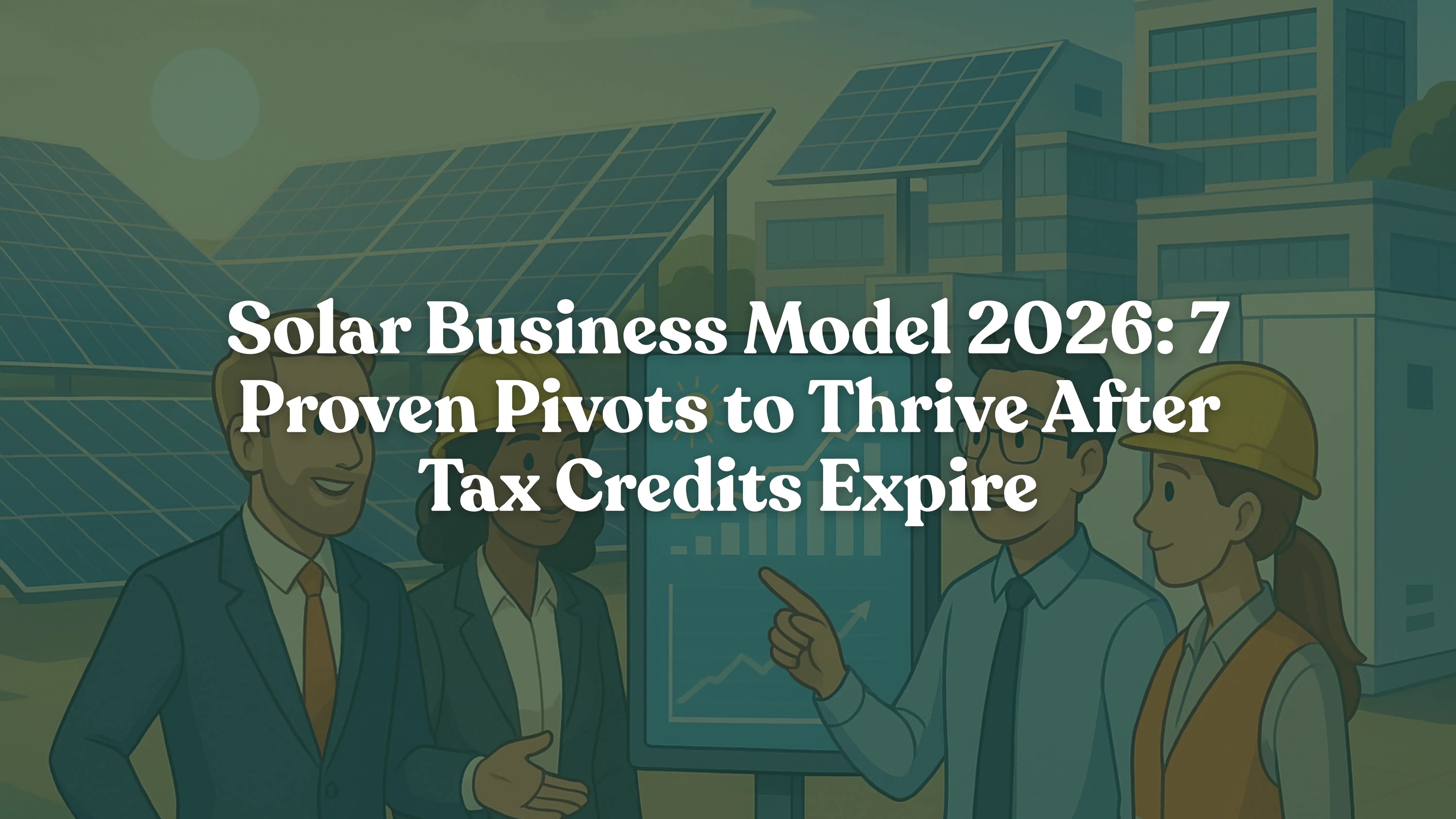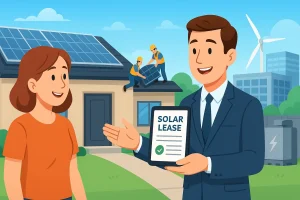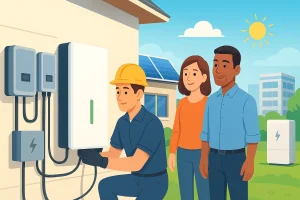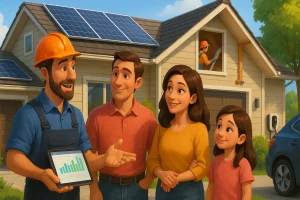How to Survive the 2026 Solar Market: 7 Business Model Pivots After the Residential Tax Credit Expires

The Solar Business Model 2026 Reality: Why Installers Must Adapt Now
The residential solar tax credit deadline of December 31, 2025, is creating serious challenges for solar installers and EPCs across America. However, smart solar businesses are already pivoting to profitable revenue streams that don’t rely on residential tax credits. In fact, successful companies are shifting toward commercial solar installations, third-party ownership models, and energy storage solutions. Consequently, this guide breaks down seven proven business model pivots that will keep your solar company thriving in 2026 and beyond.
Understanding the Solar Tax Credit Changes for 2026
The One Big Beautiful Bill signed in July 2025 eliminated the residential solar tax credit (Section 25D) effective January 1, 2026. As a result, any homeowner looking to buy their system with cash or financing after December 31, 2025, won’t receive that 30% tax break anymore.

Nevertheless, the commercial solar tax credit (Section 48E) remains active through 2027. Moreover, projects that start construction by July 4, 2026, can still claim that full 30% credit if completed within four years. Additionally, third-party ownership arrangements like solar leases and PPAs can claim these credits through 2027. Therefore, this shift isn’t the death of solar—it’s a market transformation that smart installers can leverage.
Pivot #1: Shift Focus to Commercial and Industrial Solar Projects
Commercial solar represents the biggest opportunity for solar business model 2026 strategies. Furthermore, the C&I solar market grew 27% in Q2 2025 alone, proving strong underlying demand exists beyond residential incentives.
Small and mid-sized businesses remain seriously underserved in the solar market. Consequently, these companies want to slash electricity costs and meet sustainability goals, creating your opportunity. Commercial projects typically range from 25 kW to 1 MW, offering bigger ticket sales with longer-term relationships. Additionally, commercial clients often need ongoing maintenance services, creating recurring revenue streams your residential business might have missed.
Pivot #2: Embrace Third-Party Ownership Models (TPO)
Third-party ownership through solar leases and power purchase agreements represents a massive growth opportunity post-tax credit. Since the commercial ITC continues through 2027 for TPO arrangements, your company can own the system, claim the tax credit, and offer customers lower electricity rates without any upfront cost.

This model works especially well when homeowners can’t afford the full system cost. Meanwhile, you’ll need to structure your business for longer-term asset ownership, but the recurring revenue from 20-25 year contracts creates stable cash flow. However, remember the FEOC requirements kicking in for 2026 projects—at least 40% of system components must come from manufacturers outside prohibited countries.
Pivot #3: Expand into Community Solar Development
Community solar is absolutely exploding right now. In fact, by 2026, the US expects to add 4.3 GW of community solar capacity. Furthermore, twenty-two states plus Washington D.C. already have supportive policies in place.
For solar installers, this means larger project sizes, commercial tax credit eligibility, and multiple revenue streams from one installation. Moreover, you can target businesses, nonprofits, renters, and low-to-moderate income households who can’t install rooftop systems but still want solar savings. Consequently, community solar development offers diversification that stabilizes your revenue pipeline.
Pivot #4: Add Energy Storage and Battery Systems to Your Offerings
Energy storage might be your secret weapon for surviving residential solar tax credit ending scenarios. Notably, stand-alone battery storage systems remain eligible for the 30% investment tax credit through 2032—that’s six more years of federal incentives.

Additionally, grid reliability concerns are driving battery demand through the roof. A Department of Energy report from July 2025 predicted 100 times more power outages by 2030. Therefore, homeowners and businesses want backup power, and they’re willing to pay for it even without solar panels attached.
Furthermore, solar plus storage creates better economics for customers through time-of-use rate optimization and demand charge reduction for commercial clients. As a result, storage might be the compelling reason customers still choose solar even without federal incentives.
Pivot #5: Build Operations and Maintenance (O&M) Service Divisions
Thousands of orphaned solar systems need monitoring, maintenance, repairs, and eventual repowering. Consequently, this represents steady, recurring revenue that your installation business needs for stability.
O&M services include system monitoring, inverter replacements, panel cleaning, and performance optimization. Moreover, many installers overlook this revenue stream because they’re focused on new installations. However, service contracts provide predictable monthly income that smooths out boom-and-bust cycles.
Therefore, start by reaching out to your existing customer base with annual maintenance packages. Then, expand to orphaned systems in your service area. As the solar market matures, O&M becomes increasingly valuable for commercial solar opportunities 2026 and beyond.
Pivot #6: Target New Construction and Developer Partnerships
New construction offers a unique opportunity because solar can be integrated into building costs and financed as part of the mortgage. Consequently, the upfront cost barrier disappears when solar is just another construction line item.

Moreover, the Energy Efficient Home Improvement Tax Credit (45L) for builders continues with modifications through June 30, 2026. Therefore, builders who construct energy-efficient homes can claim tax benefits, making solar an attractive feature to include.
Focus on building relationships with residential developers, commercial builders, and architects. Furthermore, offer design-build services and turnkey installations that make adding solar painless. This recurring project pipeline provides the stability that one-off residential sales can’t match.
Pivot #7: Diversify into Energy Efficiency and Whole-Home Solutions
Solar installers have deep relationships with property owners who trust them for energy solutions. Therefore, expand your offerings to include energy audits, insulation upgrades, HVAC optimization, and EV charging installation.
This whole-home approach creates multiple revenue streams from each customer relationship. Moreover, many customers considering solar actually need energy efficiency improvements first to rightsize their solar system. Consequently, by offering these services, you capture that revenue instead of sending customers to other contractors.
Additionally, energy efficiency projects often qualify for utility rebates and state incentives that continue beyond federal tax credits. This gives you compelling offers even when solar incentives dry up.
Making Your Solar Business Model 2026 Transition
Transitioning your business model takes planning and execution. First, assess which pivots align with your current capabilities and market position. Furthermore, you don’t need to implement all seven strategies at once—pick two or three that offer the best immediate opportunities.

Next, invest in training your sales team on new offerings and value propositions. Meanwhile, update your marketing to target commercial decision-makers, property owners, and developers. Remember, your residential-focused messaging won’t resonate with C&I buyers who care about ROI and long-term energy cost management.
How EnergyScape Renewables Supports Your Solar Business Model 2026 Success
The biggest challenge for solar installers isn’t knowing what to do—it’s having the resources and expertise to execute quickly. Consequently, EnergyScape Renewables serves as your end-to-end solar design and engineering partner, helping you implement the right solar business model 2026 strategies that work.
EnergyScape delivers permit-ready plan sets, PE stamping, full permitting and interconnection services, and storage-ready designs. Instead of juggling multiple vendors, you get everything from one partner who understands the post-tax credit market. Moreover, the company’s comprehensive services include site assessment support, commercial solar design, and energy storage integration.
Furthermore, pair these engineering services with Sunscape’s Site Survey App and CRM platform, and you’ve got a complete technology stack for capturing leads, automating proposals, and managing expanding service offerings efficiently.
As the solar market transforms through 2026, having partners like EnergyScape Renewables means you’re equipped with the tools and expertise to turn policy challenges into lasting growth. Ready to future-proof your solar business? Contact EnergyScape Renewables today and start building your post-tax credit success story.

sjayakanth@energyscaperenewables.com